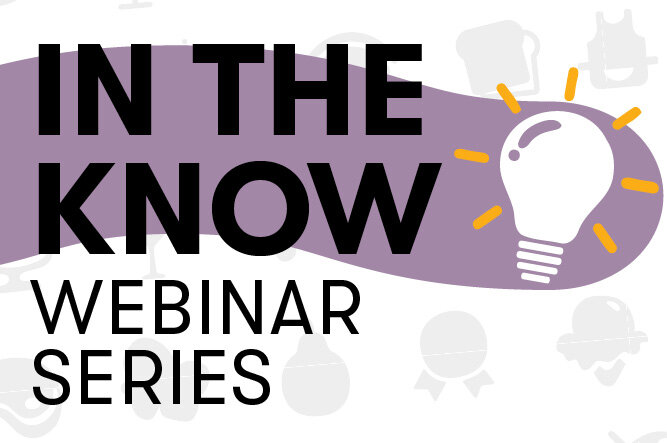SFA’s recent In the Know webinar, Fostering Inclusion in Your Workplace, featured Jenny Dorsey of Studio ATAO, an award-winning nonprofit that creates educational tools, resources, and spaces for individuals and organizations to advance systems-based change through a social justice lens and the all-affected principle. Dorsey kicked things off by defining the following terms:
Diversity. The practice or quality of including or involving people from a range of different social and ethnic backgrounds and of different genders and orientations. It is a quantitative measure of representation.
Equity. The redistribution of power, opportunities, and resources that adjusts and corrects for current and historical injustices.
Inclusion. Dorsey cited Race Forward's definition of inclusion. The organization partners with communities, organizations, and sectors, to build strategies to advance racial justice in policies, institutions, and culture. “The measure of the quality of representation, such as full access, authentic representation, empowered participation, true belonging, and power-sharing. Inclusion is a qualitative measure of representation and participation,” according to Race Forward.
Dorsey outlined how to put processes into place that encourage inclusion within companies. She covered how to build a work environment that emphasizes participatory decision-making, proactive conflict mediation, and a clear understanding of power dynamics. Here are some insights she shared:
1. When organizations evaluate representation, there are less visible characteristics of diversity that should be considered as well such as religion, ethnicity, orientation, socioeconomic status, geographical location, immigration status, and disabilities, Dorsey said.
2. Diversity shows up in different ways and means different things when it’s applied to different realms of an industry, according to Dorsey. She explained, that when we think about diverse content in food media, it covers not only who is written about and covered in stories, but how these stories are covered. Throughout her research, Dorsey saw BIPOC stories only being relegated to the personal essay section or only being highlighted during heritage months. While there’s nothing wrong with a personal essay, she feels it isn’t diversity if those with marginalized identities feel it’s their only means of entering media or that their pitch will only be accepted during a heritage month.
3. Tokenism is diversity without equity, said Dorsey. Diverse people within an organization extend beyond the literal makeup of every single person in the room, but also the power that they hold in the organization, (not just junior level staff members) and the pay they earn.
4. Often, systemic obstacles may prevent marginalized individuals from achieving certain workplace expectations like arriving on time, Dorsey mentioned. Something like punctuality may not be impacted by desire to be there and hustle, but that some are asked to overcome obstacles to simple show up daily. Instead of penalizing folks, Dorsey suggested building new systems or equitable policies to allow for success. This could look like asking questions to find out what someone is dealing with on their commute, moving hours around based on public transit schedules, and giving people the power to create change in the organization if something is presenting a challenge.
5. Even if there is diversity in the workplace, that doesn’t mean people feel the organization really centers and includes them, Dorsey noted. There are certain ways we use language or approach certain ideas or problems in an inherently exclusionary way. For example, if you only refer to certain grocery stores as “normal grocery stores”, she asks you to consider how that lands for someone that regularly shops at a different type of store.
6. Dorsey said that language shortcuts may not be intentionally harmful or exclusionary, but they still can be. Saying that certain things are too difficult to understand or require additional explanation for “our” consumers or the “typical” consumer can lead employees or individuals outside the organization, to say, “I don’t think this is too hard to understand, so am I not the typical consumer?”
7. There are different types of power available to us, and power doesn’t have to be negative, said Dorsey. A lot of DEI work is based on cultivating more positive forms of power in the workplace. She provided the following breakdown of power: Power Over: force, coercion, control; Power With: collaboration, solidarity; Power To: ability to direct change; and Power Within: sense of self, individual/group capacity.
8. If the obstacle of unequal power dynamics without checks and balances is showing up at work, Dorsey suggested considering the following:
• How can power be more clearly defined and mapped?
• Where can power be redistributed in important decisions?
• Who holds veto power?
9. If the obstacle of unresolved conflicts and fear of speaking up/upwards is showing up at work, she recommended:
• What does proactive conflict mediation look like?
• How are conflicts surfaced? (Anonymously?)
• How is accountability understood and evaluated?
10. Lastly, if the obstacle of an unrealistic sense of urgency to “fix” systemic problems, or “check the box” mentality is showing up at work, Dorsey suggested asking:
• What does long-term investment in different solution look like?
• How do we maintain momentum over time?
• Why do we as an organization care about addressing this problem?
By focusing on participatory decision making, centering the most impacted, creating processes that outlives individuals, and investing in the future to change the system, you can better brainstorm how inclusion can work inside your organization, Dorsey said.
Editor's Note: View this webinar on demand for more in-depth information until April 17. If you would like to continue the conversation, you may do so in our Community Hub.
Related: Target Makes Progress on Diversity Goals; Walmart Reports on Diversity Efforts.

